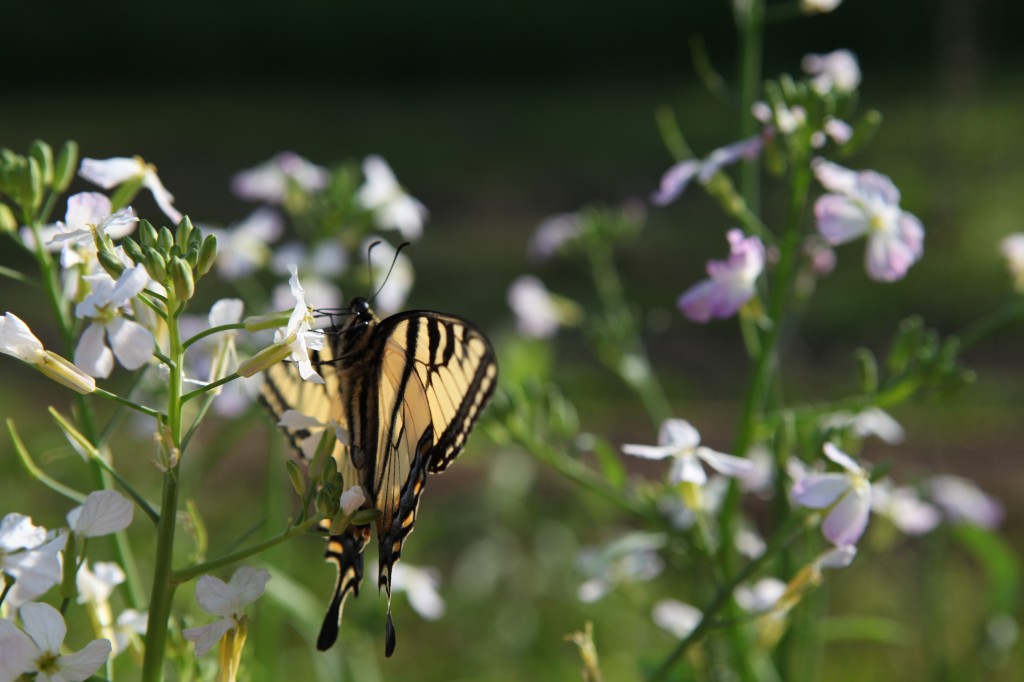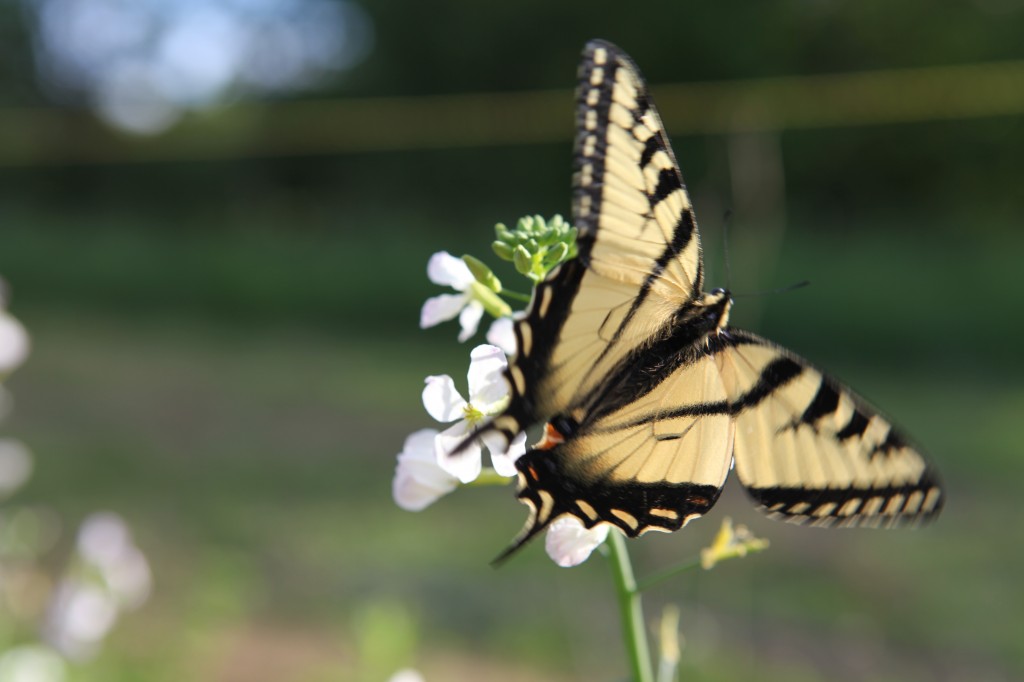Like apple cider and pumpkin pie, forage radish is mostly a fall thing. Farmers ask about spring planting frequently, and I have always dutifully answered “doesn’t work the same- it bolts” but truth be told I had never tried it myself until this year. And it bolts. The radish flowers are great for beneficial insects, but the plants don’t have the other beneficial effects associated with a fall-seeded forage radish cover crop.

The only benefit (not to diminish this wonderful benefit!) of spring-seeded forage radish is to attract insects. Photo: Natalie Lounsbury
It is beautiful when it bolts, especially when the insects find it. I managed to attract a swarm of swallowtails. As for biomass production and N uptake, spring and fall-seeded forage radish seem like two different plants.
Ray and students tried spring planted brassica (radish and rape) cover crops several years ago at the request of grain farmers who had trouble getting cover crops in early enough in fall and wanted to take advantage of the spring window they had. The biomass production was weak- less than 1.5 Mg per hectare (compared to 4-6 Mg per hectare for a fall-seeded crop), and the roots were puny, not resembling the large tubers you may think of with forage radish. These roots cannot do the biodrilling for which radish has become known. The N uptake was less than 50 kg per hectare (compared to about 150 or more for a fall-seeded crop).
This plant behavior may not make intuitive sense because table/salad radishes are a spring-seeded crop, so why doesn’t forage radish work during this time? The daylight is just too much, and no matter the temperature, the plant goes to seed.
In areas with mild winters, non-winterkilling fall-seeded radishes will also go to seed in spring. At the flowering stage, the plants are not hard to kill either mechanically or chemically (see article starting on p. 3 for how to kill radish in spring). If they are allowed to go to seed, the seeds will be viable. Another question folks ask a lot is “will it become a weed”? I am not an expert on weeds, but I have heard of farmers repeatedly letting radish go to seed and they now have it in their fields. For these farmers, they didn’t mind having it around. Your call.
The take home here is that if you want the biodrilling, nutrient capture, weed suppression, and biomass production from radish, it’s best to seed it in early fall.
If you want to attract beneficial insects with delicious radish nectar, plant a strip around your fields in spring.
And now for another pretty butterfly picture.




